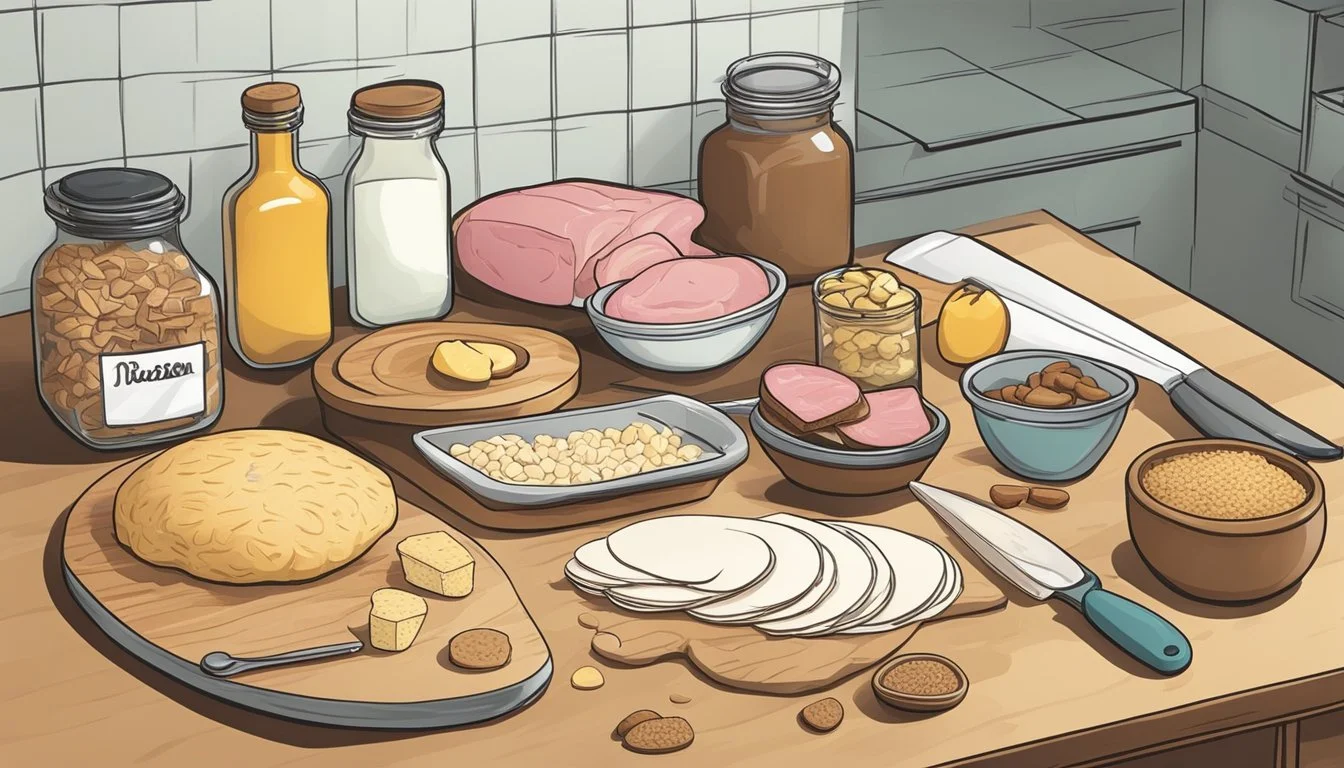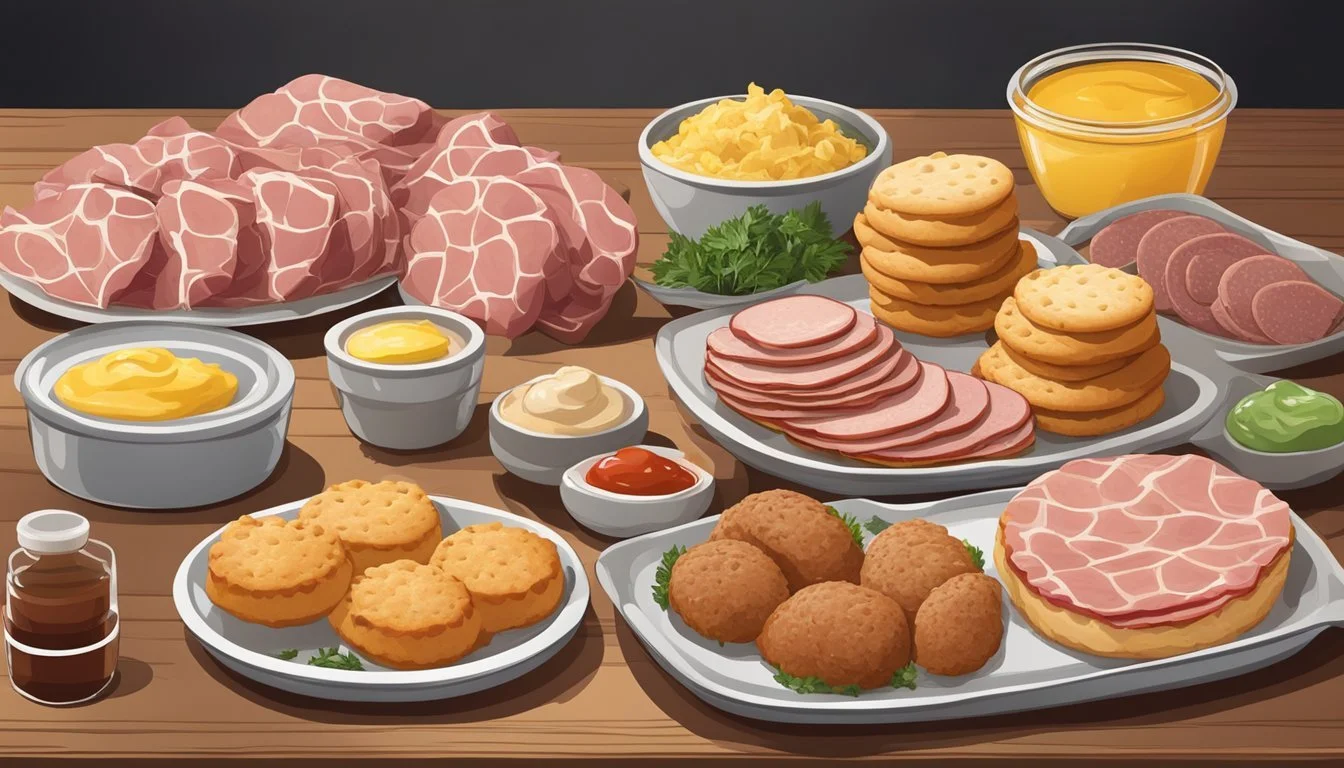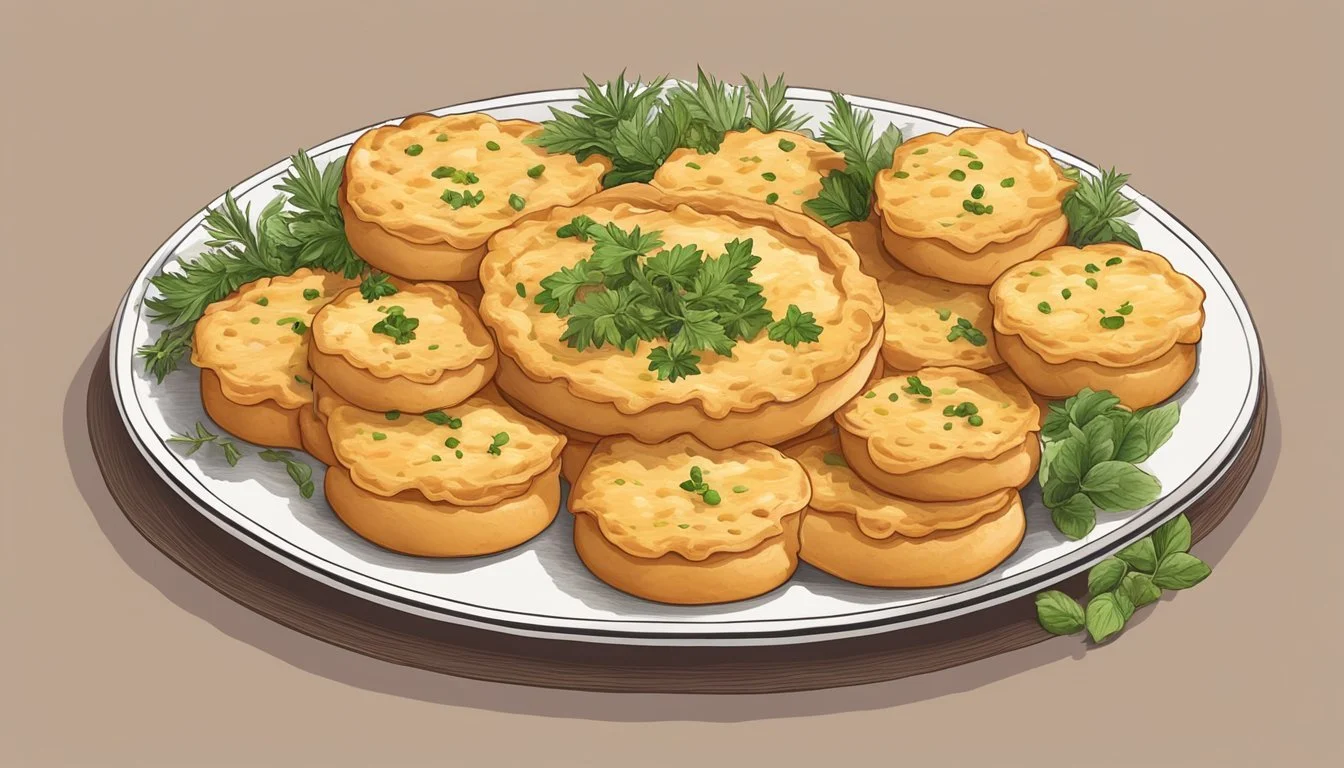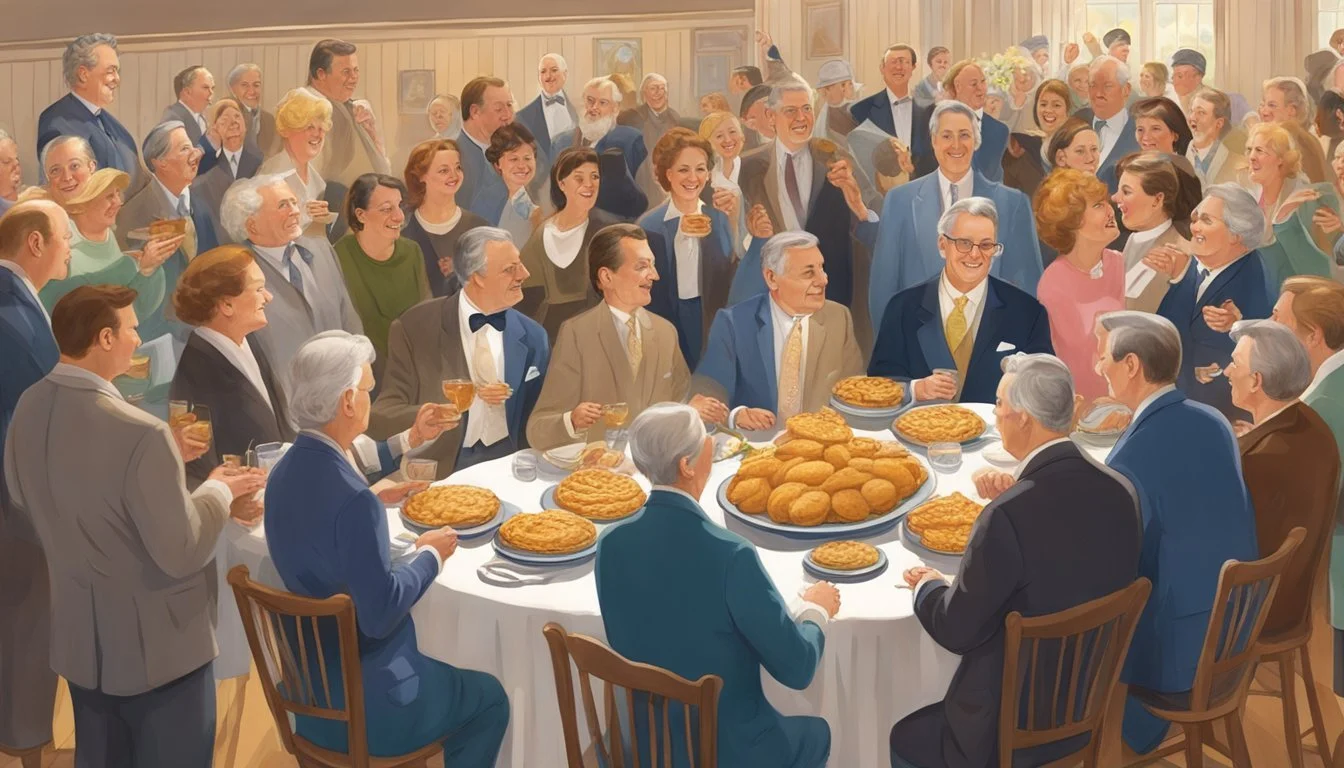Virginia: The Ham Biscuit Challenge
A Culinary Quest for Foodies
Virginia, a state rich in history and cultural heritage, has long cherished its Southern traditions, one of which is the revered ham biscuit. A staple of Virginia culture, the ham biscuit embodies the essence of Southern hospitality and comfort food. This simple yet satisfying dish has been a breakfast favorite, a must-have at church potlucks, and a proud ambassador of Virginia’s culinary traditions at both intimate family gatherings and grand social events.
The ham biscuit's challenge lies not in its complexity, but in perfecting a balance of flavors and textures. It comprises two key elements: a fluffy, buttery biscuit and the savory, salty sweetness of Virginia country ham. The biscuit itself, when done right, is light and tender, serving as the perfect vehicle for thin slices of cured ham, which offer a contrasting richness and depth of flavor.
Exploring Virginia through its ham biscuit provides a lens into the region’s commitment to tradition and local foodways. The delicate process of curing the ham and the practiced technique of biscuit-making have been passed down through generations. As such, the Virginia ham biscuit isn’t just a local delight—it's a symbol of heritage and a tribute to the artisans who craft it with pride and care.
History and Legacy of Virginia Ham Biscuits
Virginia ham biscuits are a culinary tradition deeply ingrained in the state's history. Starting from humble beginnings, they have evolved into a cultural icon revered across the commonwealth.
Origins of Country Ham Biscuits
Country ham biscuits trace their lineage to the early culinary traditions of Virginia. Settlers learned preservation techniques from Native Americans, leading to the development of the dry-cured, savory Virginia ham. Over time, these hams became a staple, often served ensconced within freshly baked, flaky biscuits. This combination of salt-cured ham with soft, buttery biscuits crafted a simple yet satisfying fare that grew in popularity, especially in rural localities like Freetown, Virginia.
The process of making country ham begins with curing the meat in a mixture of salts and sugars, followed by a lengthy drying and aging period. This could typically take up to a year or more, resulting in a distinctive, robust flavor. Family smokehouses were commonplace, contributing to the refinement of the ham curing process and enhancing the community's culinary practices.
Virginia Ham and Its Cultural Significance
Virginia ham biscuits are more than just a satisfying snack; they represent the cultural heritage of the state. Notably, the town of Smithfield has been recognized as the "Ham Capital of the World," with its renowned Smithfield Ham being a gourmet delicacy. These hams must be cured within the town's limits to earn the prestigious title, a testament to the region's dedication to maintaining authenticity.
At gatherings, from church revivals to ball games, the presence of Virginia ham biscuits symbolizes Southern hospitality and community spirit. These biscuits embody a history of shared experiences and are a common thread that binds the culinary identity of Virginia. The appreciation for the craft of ham production and its incorporation into local cuisine can still be observed today, with modern renditions paying homage to the flavor profiles that have delighted generations.
Fundamentals of Biscuit Making
In creating the perfect biscuit, one must comprehend the individual roles of ingredients and the precise execution of baking techniques. Both elements are indispensable to the process, and their mastery can elevate a simple biscuit to one worthy of any Virginia ham sandwich.
Understanding Biscuit Ingredients
The foundation of biscuit making is a well-balanced mixture of flour, baking powder, salt, milk, and butter. The flour provides structure, with a higher protein content leading to a firmer biscuit, while baking powder (and occasionally baking soda), serves as leavening agents that contribute to fluffiness and lift.
Flour: Select all-purpose flour for balanced texture.
Baking Powder: This must be fresh to ensure proper rise.
Salt: Enhances flavor; use it in moderation.
Milk: Moistens and binds the dough; whole milk adds richness.
Butter: Cold butter ensures a flaky texture when it melts during the bake.
The quality of these ingredients directly affects the outcome, with each bringing its own characteristics that interact to create the biscuit's texture and taste.
The Role of Baking Techniques
Just as crucial as the ingredients themselves is the technique with which they are assembled. One must sift the dry ingredients to incorporate air and ensure even distribution. The butter should be cut in until the mixture resembles coarse crumbs, with pea-sized pieces of butter remaining that will steam and create flaky layers in the oven.
Sifting: Clarifies and aerates the flour mixture.
Baking: Preheat the oven for consistent heat distribution; bake until golden brown.
The process of cutting in the butter must be handled with care to ensure those sought-after flaky layers. Once the dough is mixed, it should be handled as little as possible to prevent the development of gluten, which leads to a tougher biscuit. After cutting the biscuits out, they should be placed on the baking sheet in a way that allows them to support one another as they rise, yielding an even bake and soft center.
Classic Ham Biscuit Recipe
A classic Virginia ham biscuit combines the saltiness of country ham with the fluffiness of a golden buttermilk biscuit. This traditional recipe is a testament to Southern comfort food.
Ingredient Selection
For the biscuits, the recipe calls for all-purpose flour to create a sturdy yet soft dough, and cold buttermilk for tenderness and a slight tang. Unsalted butter is preferred for its creaminess, allowing one to control the seasoning, while cold lard or shortening provides the necessary fat that results in a flaky texture. It's essential to use high-quality country ham, thinly sliced, to ensure the right balance of flavor and texture.
Preparation Steps
To start, one should sift the dry ingredients together to ensure even distribution. They must then cut in the cold lard until the mixture resembles coarse crumbs. Gradually, the buttermilk should be added just until the mixture comes together to form a soft dough. They must handle the dough gently to avoid overworking it, which can lead to tough biscuits.
Baking the Perfect Biscuit
Once rolled out to a half-inch thickness on a floured surface, the biscuits should be cut out with a biscuit cutter and placed on a parchment paper-lined baking sheet. Leftover scraps can be gently recombined and rerolled for additional biscuits. Melted unsalted butter or salted butter can be brushed on top for a golden finish. The biscuits should be baked in a preheated oven until puffed and golden, creating an ideal base for the savory country ham.
Variations and Accompaniments
In the realm of Virginia ham biscuits, a host of variations cater to both tradition and modern culinary creativity, with region-specific biscuits and an array of fillings and toppings that enhance the classic flavor profile.
Regional Biscuit Varieties
Sweet Potato Biscuits: A Southern staple, these biscuits introduce a subtle sweetness and are a perfect complement to the savory taste of Virginia ham. They can be found in many variations across the state, with some regions incorporating spices to elevate the flavor.
Creative Fillings and Toppings
Cheese: A slice of sharp cheddar or creamy brie can balance the saltiness of the ham, adding another level of richness to the biscuit.
Mustards and Spreads: Traditional yellow mustard remains a classic pairing, while options like Dijon Mustard and Honey Mustard offer complexity with a tangy kick or a blend of sweet and spicy notes.
Sweet Toppings: For those who prefer a hint of sweetness, dabs of honey or fruit jams complement the savory ham perfectly.
Herbs: Finely chopped chives can be sprinkled atop buttery biscuits for a fresh, herby touch that cuts through the richness of the meat and butter.
Serving and Presentation
When it comes to Virginia ham biscuits, the method of serving and presentation can enhance the enjoyment of this Southern staple. The right approach can make ham biscuits fit for a range of occasions, from casual get-togethers to formal events.
Event-Specific Serving Ideas
Breakfast and Brunch (What wine goes well with brunch?): For these early gatherings, Virginia ham biscuits can be served on a tray as a main feature or an accompaniment to eggs and grits. Offering biscuit sandwiches filled with a slice of ham turns the humble biscuit into a hearty meal.
Snacks and Tailgating: As an informal snack, smaller biscuits are perfect for handing around at tailgate parties. Pre-made and wrapped in foil, they'll stay warm and are easy to eat even while standing.
Wedding and Funeral Receptions: For receptions, ham biscuits can be presented on silver trays for an elegant touch. Serving them as part of a larger buffet spread allows guests to enjoy them at their leisure.
Party: For a casual party, biscuit bars with assorted jams and honey invite guests to customize their biscuits, creating a more interactive experience.
Plating and Pairing
Biscuit Sandwiches: For savory, yet simple plating, place a single ham biscuit sandwich on a small plate with a side of pickles or a light salad.
Brunch: During a brunch affair, pair the biscuits with fresh fruit or arrange them in a basket, covered with a warm towel to keep them fresh.
Tailgate: At a tailgate, biscuits are often best served right out of the back of a car on a paper-lined tray, with cold beverages to wash them down.
Party: When serving at a party, mingle biscuits on a platter with an assortment of cheeses and meats for guests to graze.
In all settings, the warmth of the biscuits is almost as important as their taste; they should be served warm, ideally just after coming out of the oven, to maximize their buttery, flaky quality.
Baking Tips and Troubleshooting
In the quest for the perfect Virginia ham biscuit, specific techniques and ingredient handling can make a significant difference. This section offers solutions to common baking errors, along with tried-and-true tips for achieving consistently good results.
Common Baking Errors
Incorrect Measurement of Baking Powder: Baking powder is crucial for the rise and fluffiness of biscuits. Using too much or too little can lead to biscuits that are either too dense or overly risen and hollow.
Overworking the Dough: Biscuits require a gentle touch. Over-mixing the dough develops gluten, resulting in tough biscuits. They should blend just until the dough comes together.
Not Using a Pastry Blender Properly: For those who opt for a manual approach, a pastry blender is key to cutting the fat into the flour without melting it from the heat of one's hands. However, failing to achieve a coarse meal-like texture can affect the flakiness of the biscuits.
Improperly Chilled Ingredients: Using chilled fat and keeping the dough cold before baking are vital. Warm dough can lead to a heavy texture as the fat melts prematurely.
Pro Tips for Consistent Results
Measuring Technique: To ensure the correct amount of baking powder, spoon it into the measuring cup and level off with a knife. Do not scoop directly from the container, as this can lead to compaction and too much leavener.
Dough Consistency: When it feels slightly tacky but not sticky, and it’s homogeneous without visible flour pockets, it’s ready to be rolled out.
Utilizing Tools: If available, a food processor can be used to pulse the dry ingredients with the fat, helping keep it cold and reducing the likelihood of overmixing.
Skillet Baking: For an irresistible crust, bake biscuits in a preheated skillet. This technique provides direct heat to the bottom, yielding an especially crispy base.
By applying these tips and addressing common mistakes, home bakers can elevate their Virginia ham biscuits from good to great. Whether one prefers using traditional tools like a pastry cutter or modern appliances like a food processor, attention to detail and proper technique will lead to delicious results every time.
The Cultural Impact of Ham Biscuits in Virginia
Ham biscuits are not just a culinary treat in Virginia; they are a symbol deeply rooted in the local culture and community life. These savory snacks (What wine goes well with savory snacks?) embody the tradition and history of the state and serve as a testament to Southern hospitality.
Traditions and Community
In Virginia, ham biscuits have been an integral part of communal celebrations for generations. Considered a Southern tradition, these flaky, buttery biscuits filled with thinly sliced, salt-cured country ham have graced tables at numerous gatherings, from church picnics to family reunions.
Local Festivals: Many towns across Virginia feature ham biscuits at local festivals, showcasing the rich food heritage of the state. They are a point of pride at these events, highlighting Virginia's ability to maintain its culinary traditions while introducing them to new generations.
Family Traditions: Beyond public celebrations, making and serving ham biscuits is often a family affair. Recipes are passed down through generations, with each family adding their own twist, thereby weaving ham biscuits into the fabric of Virginia culture.
Community Building: Sharing a ham biscuit in Virginia often signifies a warm welcome. It's a gesture that fosters a sense of community and belonging, making strangers feel like they're part of the family. This act of sharing traditional food is a hallmark of Southern hospitality.
The ham biscuit represents more than just a tasty snack; it’s a vessel for Virginia's cultural identity and a bridge between past and present. Each bite is a nod to the state's history and a shared experience that continues to bring people together.
Conclusion
The conversation around Virginia's beloved ham biscuits illuminates the tradition and culinary pride of the region. They represent more than a simple snack, encapsulating a history of community and local flavor. The debate over whether a proper ham biscuit is served on a dinner roll or a biscuit showcases the nuances within Virginia's food culture.
Various adaptations of the recipe take place in kitchens throughout the state, ranging from the addition of savory spreads like mustard or honey mustard to the inclusion of cheese for an extra layer of richness. Despite these variations, the core element remains -- quality Virginia ham paired with a soft, flaky biscuit.
Trigg County's attempt at crafting the 'World's Largest Country Ham and Biscuit' emphasizes the importance and affection for this regional specialty. They may not challenge Virginia, but they do contribute to celebrating a shared Southern heritage.
These ham biscuits not only serve as appetizers or part of a meal but also as a subject of culinary discussion. Whether enjoyed at a family gathering, a community event, or simply as a quick meal, Virginia ham biscuits continue to roll out delight, preserving their status as a staple of Virginia's cuisine and tradition.









